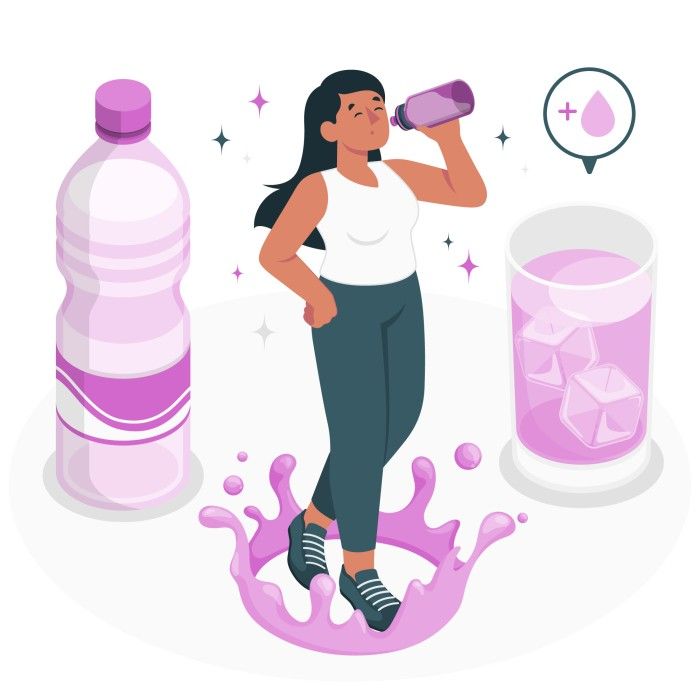Electrolytes for Hydration & Muscle Function: Benefits, Imbalance & Recovery
By NutrioTalk
We often hear the term “electrolytes” tossed around in fitness circles, sports drink ads, and recovery plans—but what exactly are they, and why do they matter so much for hydration and muscle performance?
Electrolytes are not just buzzwords; they are vital chemical messengers in the body, deeply involved in everything from nerve transmission and muscle contraction to fluid balance and pH regulation. Understanding how electrolytes function and how they’re affected by diet, physical activity, and health conditions can help prevent fatigue, cramps, and dehydration—whether you’re an athlete or just trying to stay healthy.
Let’s explore the role of electrolytes in depth, examining their science, applications, common challenges, and modern-day solutions.

What Are Electrolytes?Electrolytes and Hydration: What’s the Connection?
Water alone isn’t enough for hydration. When we sweat, especially during intense activity or hot weather, we lose both water and electrolytes—mainly sodium and chloride. If those electrolytes aren’t replaced, we risk developing symptoms of dehydration, including:
• Dizziness or confusion
• Muscle cramps
• Fatigue
• Drop in blood pressure
Maintaining balanced electrolytes is essential for proper hydration, cellular function, and muscle performance. That’s why electrolyte-rich fluids are recommended for endurance athletes, during illness (e.g., vomiting, diarrhea), and in extreme heat.
Role in Muscle Function
One of the most immediate ways electrolyte imbalance affects the body is through muscle performance. Here's how:
• Sodium and potassium regulate nerve impulses and initiate muscle contraction.
• Calcium enables the muscle fibers to contract.
• Magnesium helps relax muscles and prevent spasms.
Even a slight imbalance can trigger muscle cramps, weakness, or twitching. This is especially common in endurance sports or when fluid loss isn’t replenished properly.
Historical Background
The importance of electrolytes came into focus in the early 20th century through studies on nerve conduction and muscle physiology. Researchers discovered that without minerals like sodium and potassium, nerves couldn’t fire and muscles couldn’t contract.
Later, during wars and major athletic events, electrolyte imbalances were linked to heatstroke and muscle collapse, prompting medical and sports communities to integrate electrolyte replacement strategies.
Fatigue, Overhydration, and Hyponatremia
While dehydration is well known, overhydration—drinking excessive water without replenishing electrolytes—can be just as dangerous. This dilutes sodium levels in the blood, leading to hyponatremia, a potentially life-threatening condition. Symptoms include nausea, confusion, and in severe cases, seizures or coma. Hyponatremia is commonly seen in endurance athletes who drink too much plain water during long events.
Common Misconceptions
• Myth: Only athletes need electrolytes.
Reality: Anyone can become electrolyte deficient—especially children, elderly, or people with health conditions like diabetes or kidney disorders.
• Myth: All sports drinks are good for you.
Reality: Many are loaded with added sugars and artificial ingredients. It's important to check labels and opt for cleaner options.
• Myth: Cramping means you're low on potassium only.
Reality: Cramps can result from imbalances in magnesium, calcium, or sodium as well—not just potassium.
Electrolyte Sources & Daily Needs
You can get electrolytes from a balanced diet. Some key sources include:
• Sodium: Salt, pickles, broth
• Potassium: Bananas, potatoes, leafy greens
• Calcium: Dairy products, almonds, fortified plant milks
• Magnesium: Nuts, seeds, whole grains
• Chloride: Table salt, seaweed
• Phosphates: Beans, meat, dairy
Daily needs vary depending on age, activity level, and climate. For example, the Recommended Daily Intake (RDI) for potassium is around 3,400 mg for men and 2,600 mg for women (U.S. standards), but most people consume far less.
Latest Trends and Research
• Personalized hydration apps use data from wearables to track sweat loss and suggest electrolyte needs in real-time.
• Electrolyte-enhanced waters and powders are trending as cleaner, more accessible hydration tools.
• Research is exploring sodium sensors and smart patches that measure electrolyte loss via sweat and offer feedback.
Global studies also show disparities in hydration needs across regions. For example, tropical countries see higher heat-related illnesses due to poor awareness and access to electrolyte solutions.
Practical Guide to Managing Electrolyte Balance
Here’s how to maintain optimal electrolyte levels:
1.Hydrate With Purpose
If you're sweating heavily, add an electrolyte solution to your water.
2.Eat a Variety of Whole Foods
Nature already provides a mineral-rich mix in fruits, veggies, nuts, and seeds.
3.Avoid Excessive Salt Restriction
Unless advised for medical reasons. Moderate salt is necessary.
4.Opt For Less Sugary Drinks
During illness or exercise, opt for oral rehydration solutions (ORS) or electrolyte drinks without excess sugar.
5.Watch Out for Medications
Diuretics, laxatives, and some antibiotics can cause electrolyte loss.
Future Outlook
In the coming decade, we’ll see more personalized hydration plans, AI-driven apps, and medical-grade hydration wearables that adjust in real-time. With rising global temperatures and increasing physical activity trends, managing hydration and electrolytes will become a mainstream health priority—not just an athlete’s concern.
Key Takeaways
• Electrolytes are essential for hydration, muscle function, and nerve signaling.
• Losing them through sweat, illness, or poor diet can lead to serious health issues like cramps, fatigue, and even seizures.
• A balanced intake of electrolyte-rich foods and fluids ensures better performance, recovery, and overall well-being.
• With modern tools and better awareness, staying hydrated with the right balance of electrolytes is easier than ever.
Whether you're working out, recovering from illness, or simply navigating a hot day—don’t just drink water. Think electrolytes.

